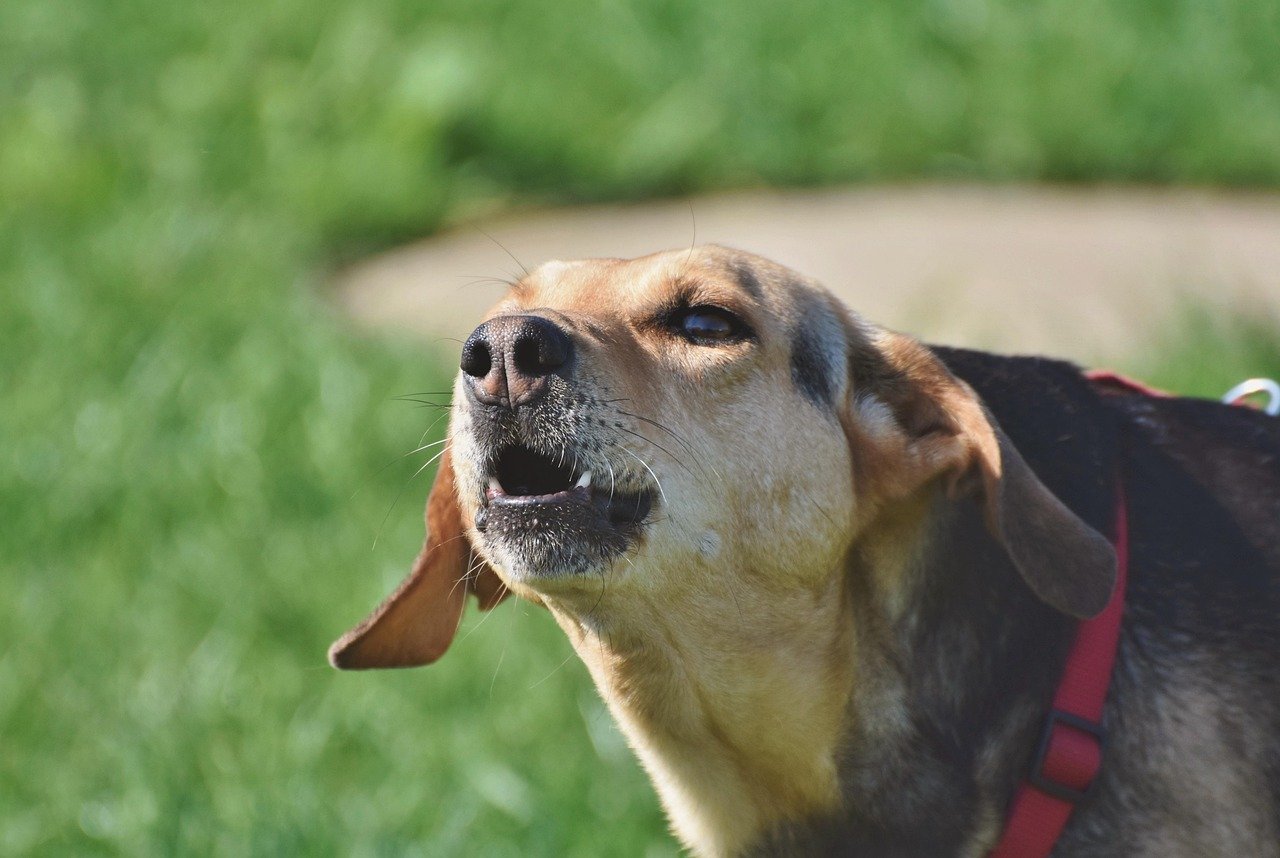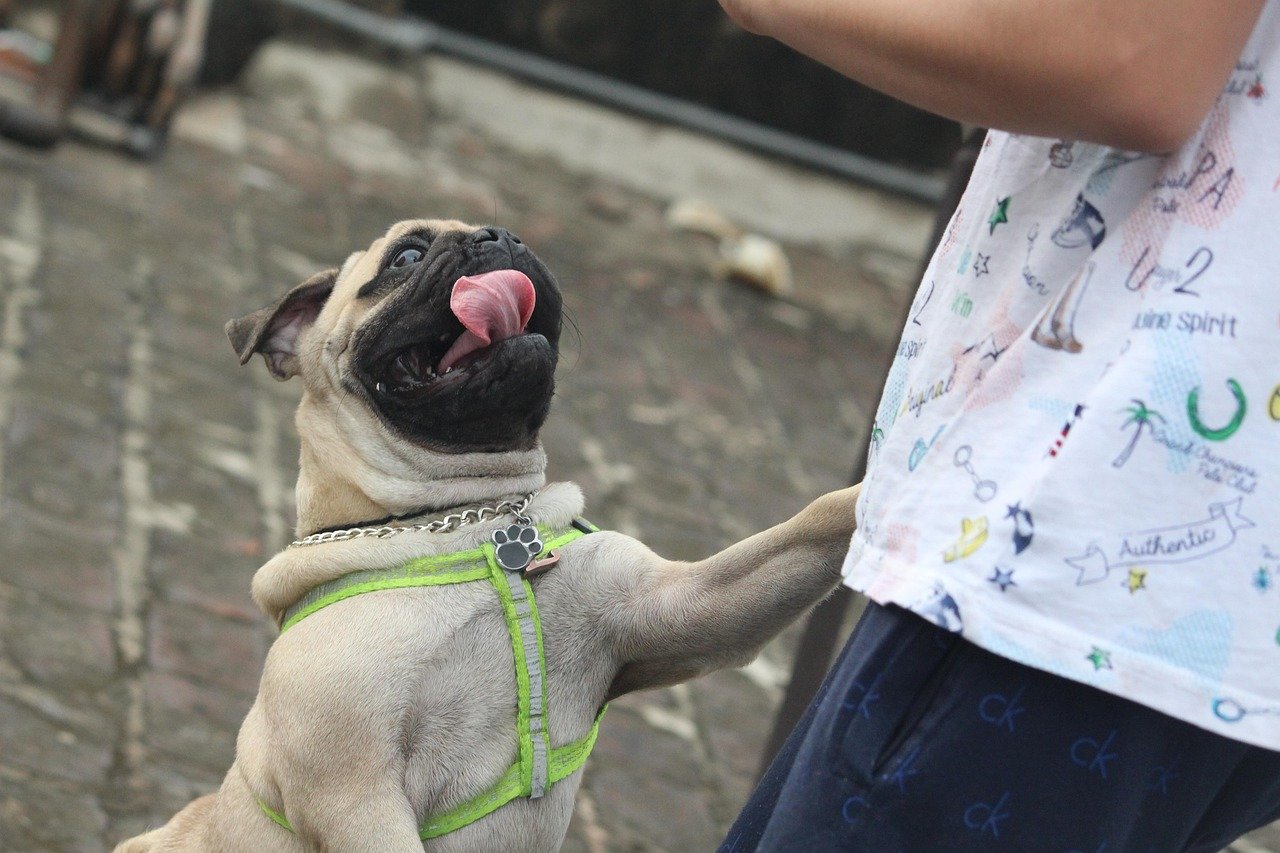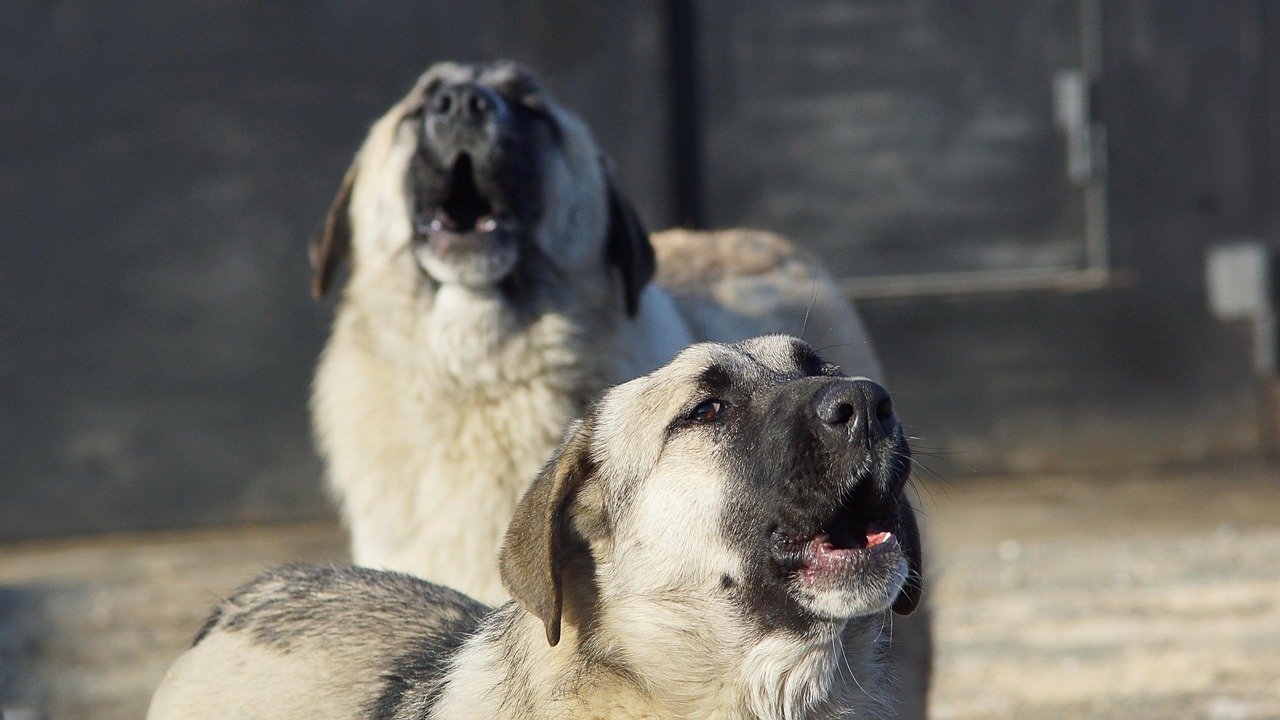Have you ever stared at your dog, baffled by something they did and wondered, “What in the world does that mean?” You’re not alone! Dogs are amazing, quirky creatures, and sometimes their actions leave us scratching our heads or even feeling frustrated. But what if the things that annoy or confuse us are actually your dog’s way of trying to communicate or cope? Imagine how much better life with your furry friend would be if you could just understand their “language.” Let’s dive into the 15 most common dog behaviors that leave owners puzzled—and uncover the real reasons behind these mysterious habits.
Barking at Nothing

It can be startling or even a little spooky when your dog suddenly starts barking at what seems like thin air. Many owners think their dog is just being annoying or attention-seeking. In reality, dogs have much sharper senses than humans. They might pick up on high-pitched sounds, subtle movements, or even scents that we completely miss. For example, your dog could be alerting you to a squirrel outside the window or a neighbor walking past your house. Sometimes, barking at “nothing” is actually your dog’s way of communicating that they are on guard, trying to protect you and their territory. Instead of scolding them, try to gently redirect their attention and remember—they might just be seeing a world we can’t.
Chewing on Furniture or Shoes

Few things are more frustrating than finding your favorite pair of shoes chewed to pieces. Most owners immediately assume their dog is being naughty or spiteful. In truth, chewing is a natural behavior for dogs of all ages, but especially for puppies who are teething. Chewing helps relieve discomfort and also keeps their jaws strong and teeth clean. Adult dogs may chew out of boredom, anxiety, or simply because they like the taste and texture. Instead of punishing your dog, provide plenty of safe chew toys and make sure they’re getting enough physical and mental exercise. Think of it like toddlers putting everything in their mouths—sometimes, they just can’t help it!
Digging in the Yard
If you’ve ever discovered a freshly-dug hole in your backyard, you might have felt annoyed or confused. Many owners think their dog is just being destructive, but digging is actually an instinctive behavior. Dogs may dig to create a cool spot to lie in, to hide food or toys, or because they’re hunting for small animals underground. Some breeds, like terriers, are hardwired to dig. Other times, dogs dig out of boredom or anxiety. Instead of getting angry, try providing a designated digging area or sandbox, and make sure your dog is getting enough stimulation and exercise. Sometimes, digging is just their way of having a little fun.
Jumping Up on People

It’s easy to assume a dog who jumps up on guests is just unruly or poorly trained. But from your dog’s perspective, jumping is a way to greet you at your level—after all, you’re much taller than they are! Puppies jump to lick their mother’s face, and the habit often sticks around as a way of showing excitement and affection. While it can be startling or even dangerous for small kids or elderly relatives, the behavior isn’t meant to be disrespectful. The best way to handle it is to teach your dog an alternative greeting, like sitting calmly. Remember, your dog’s just happy to see you—they don’t realize they’re being impolite.
Growling During Play

Hearing your dog growl, even during play, can be alarming. Many owners worry their dog is turning aggressive or unsafe. However, growling during play is actually a normal part of how dogs communicate boundaries and excitement. It’s their way of saying, “This is fun!” or “That’s a bit too rough!” Look for other signs like a wagging tail, relaxed body, and playful bows to gauge your dog’s mood. If the growling sounds low and menacing or is accompanied by stiff posture, that’s when it’s time to step in. Most of the time, though, playful growling is just your dog’s way of expressing joy.
Rolling in Smelly Things

Few things are more disgusting than seeing your dog gleefully rolling in something foul. This behavior leaves many owners baffled—and desperate for the nearest bath. While it’s gross to us, rolling in strong or stinky smells is a leftover instinct from their wild ancestors, who rolled in scents to mask their own and sneak up on prey. Some dogs might just enjoy the novelty of a new smell. Instead of scolding, try to anticipate and avoid stinky spots, and keep those doggy wipes handy. It’s their version of putting on perfume—even if it makes our noses wrinkle!
Licking People Excessively

Dogs who shower their owners with licks are often labeled as “overly affectionate” or even “clingy.” While licking is a sign of affection, it’s also a way for dogs to communicate and seek comfort. Puppies lick their mothers for reassurance, and the habit continues into adulthood. Some dogs lick to get your attention, to explore your skin’s taste, or to calm themselves when anxious. If licking becomes excessive, it might be a sign of stress or even a medical issue. Notice when and why your dog licks—sometimes, they just want to say, “I love you.”
Chasing Their Tail

It’s hilarious to watch a dog spin in circles chasing its own tail, but is it normal? Many owners worry it’s a sign of boredom or even a psychological problem. For most dogs, tail-chasing is a playful, harmless activity—especially in puppies and young dogs. It can also be a way to burn off excess energy or get your attention. However, if the behavior becomes obsessive or is accompanied by biting at the tail, it could indicate allergies, irritation, or stress. Keep an eye on the frequency and intensity, but remember, sometimes dogs just like to be silly.
Leaning on You or Sitting on Your Feet
Dogs who lean against their owners or plop down on their feet often get labeled as “needy” or “clingy.” In reality, this behavior is a sign of trust and affection. Leaning or sitting close is your dog’s way of seeking comfort and protection—it’s like a canine hug. In some cases, dogs may also do this to claim you as “theirs” or to feel secure in new or uncertain environments. Far from being a sign of weakness or insecurity, it’s actually a huge compliment. Your dog is saying, “You’re my safe place.”
Pulling on the Leash

One of the most common frustrations for dog owners is a dog who pulls relentlessly on the leash during walks. It’s tempting to think your dog is stubborn or disobedient, but pulling is usually about excitement or curiosity. Dogs naturally walk faster than humans, and the world outside is packed with interesting sights and smells. Leash walking is a skill that needs to be taught—dogs aren’t born knowing how. Training with positive reinforcement and patience can turn walks into a pleasant experience for both of you. Remember, your dog’s not trying to drag you—he just can’t wait to explore!
Eating Grass
Many owners panic the first time they see their dog munching on grass, fearing illness or dietary imbalance. But eating grass is a common behavior in dogs and isn’t usually a sign of sickness. Some theories suggest dogs eat grass to help with digestion, to induce vomiting if they’re feeling unwell, or simply because they like the taste and texture. Unless your dog is eating grass obsessively or showing other signs of illness, it’s generally nothing to worry about. It’s just another way dogs explore the world around them—sometimes, the lawn is just too tempting.
Howling at Sirens or Music

If your dog lets out a dramatic howl when an ambulance or fire truck passes by, you might wonder if they’re in pain or afraid. Actually, howling at sirens, music, or other high-pitched sounds is a throwback to their wolf ancestors, who used howling as a way to communicate over long distances. Some dogs are more vocal than others, and certain sounds can trigger their instinct to “join in” with the noise. As long as your dog isn’t howling constantly or showing signs of distress, it’s usually harmless—and maybe a little bit entertaining!
Sleeping in Odd Positions
Dogs have a knack for contorting themselves into the most bizarre sleeping positions—on their backs with legs in the air, curled up tight, or stretched out like a pancake. Owners sometimes worry that these positions mean their dog is uncomfortable or in pain. In fact, the way your dog sleeps can reveal a lot about how safe and relaxed they feel. Dogs who sleep belly-up feel completely secure in their environment, while those who curl up are conserving warmth or protecting themselves instinctively. Each dog has their own preferences, and these quirky poses are usually nothing to worry about.
Refusing to Eat or Skipping Meals
When a dog turns up their nose at food, it can send owners into a panic. While a sudden loss of appetite can be a sign of illness, occasional meal skipping isn’t always cause for concern. Sometimes dogs are just not hungry, especially if they’ve had treats or table scraps. Changes in routine, stress, or even the weather can affect a dog’s appetite. Monitor your dog for other symptoms like vomiting, lethargy, or weight loss, and consult your vet if concerned. Most of the time, a skipped meal is just your dog’s way of saying, “Not right now, thanks.”
Staring at You Intently
Few things are more intense than your dog locking eyes with you for what feels like forever. Some owners find this unnerving or assume their dog is challenging them. In reality, staring is one of the ways dogs communicate with us. Sometimes they’re asking for something—food, playtime, or a walk. Other times, they’re trying to read your emotions or simply bond with you. Eye contact can be powerful; in the dog world, it’s both a sign of trust and curiosity. When your dog stares at you, he’s often saying, “I love you, and I want to understand you better.”
Many common dog behaviors are often misread by even the most loving owners, leading to unnecessary frustration or confusion. By taking the time to understand what your dog is truly trying to communicate—whether it’s through barking, body language, or quirky habits—you open the door to a more trusting and harmonious relationship. Recognizing the meaning behind these behaviors allows you to respond with empathy, guide your dog more effectively, and strengthen your bond. After all, a well-understood dog is a happier, more secure companion—and a more joyful part of your life.
Jen is a passionate nature lover and ocean conservationist. She has dedicated her life to protecting the environment and preserving the beauty of the natural world. Growing up in a small coastal town, Jen sincerely appreciated the ocean and its inhabitants. She has spent countless hours exploring the shoreline, learning about the creatures that inhabit the waters, and advocating for their protection. Jen is an active member of ocean conservation organizations, and she is committed to educating the public about the importance of conserving wildlife and the natural environment.






